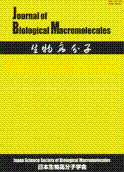Volume 12, Issue 1
Displaying 1-2 of 2 articles from this issue
- |<
- <
- 1
- >
- >|
Review
-
2012Volume 12Issue 1 Pages 3-15
Published: May 01, 2012
Released on J-STAGE: December 14, 2012
Download PDF (293K)
Article
-
2012Volume 12Issue 1 Pages 17-28
Published: May 01, 2012
Released on J-STAGE: December 14, 2012
Download PDF (245K)
- |<
- <
- 1
- >
- >|
